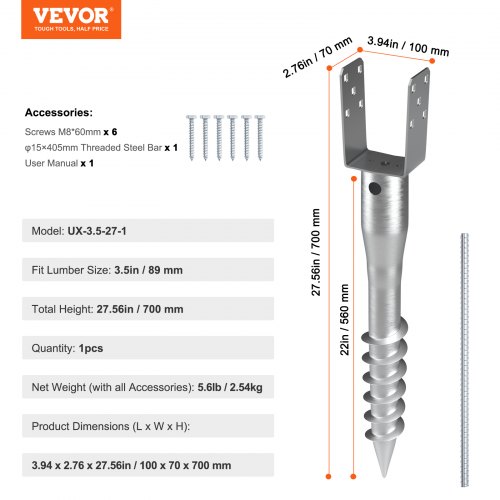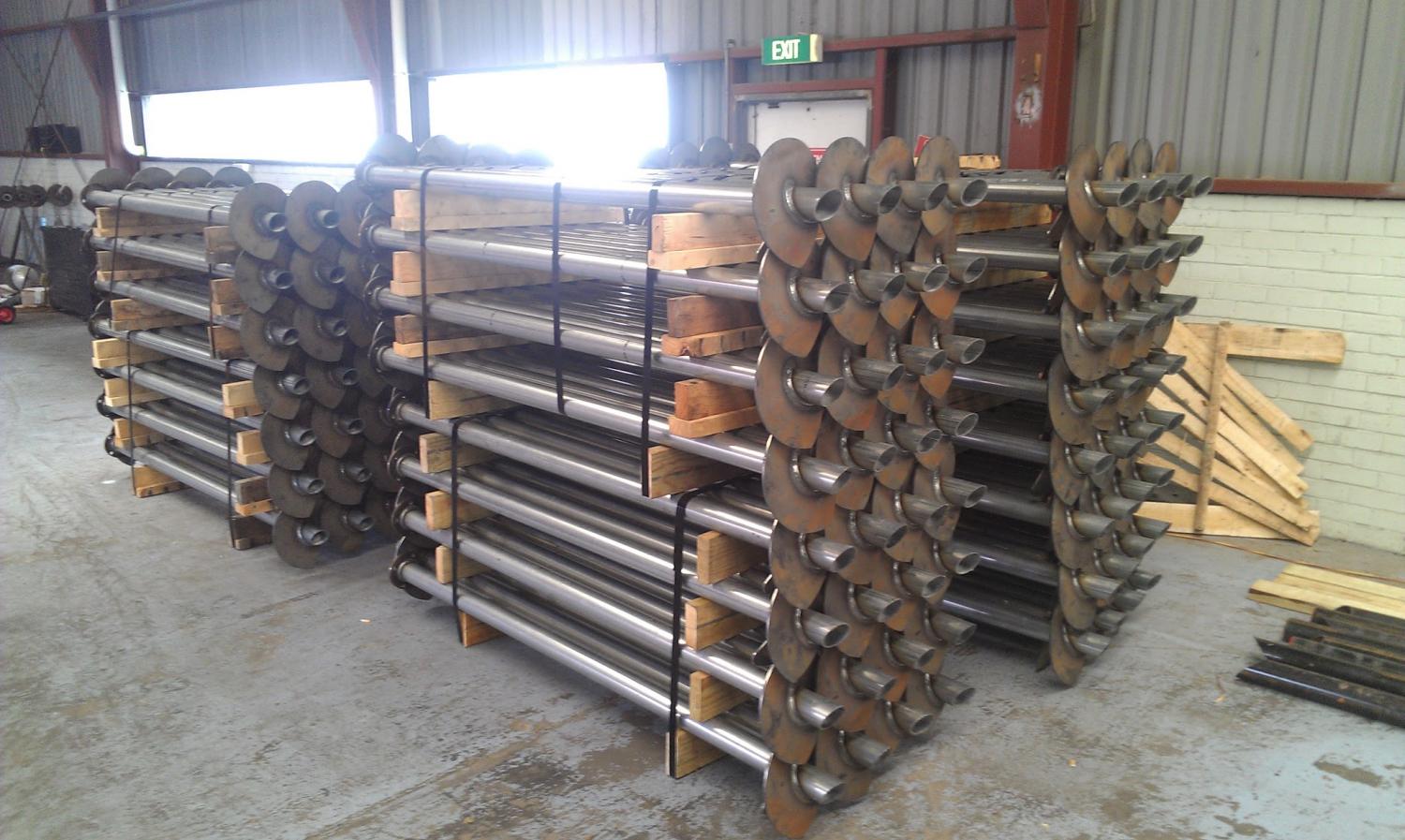How Sturdy Earth Anchors Work: A Comprehensive Guide to Soil Anchoring Solutions
Sturdy Earth supports play a crucial function in providing stability and support in different construction applications. By installing deeply into the ground, they withstand vertical and lateral forces efficiently. Various sorts of supports satisfy different soil conditions, making them flexible. Recognizing their technicians and setup methods is vital for making best use of performance. What factors affect their performance, and exactly how do they contrast to standard approaches? The solutions may shock you.
Comprehending Durable Earth Anchors
Heavy-duty Earth supports act as important components in various construction and landscape design tasks, supplying security and support in tough dirt problems. These anchors function by being installed into the ground, where they resist upright and side forces. Their layout permits for safe add-on to frameworks, guaranteeing they stay secured against soil activity or outside loads.The efficiency of heavy-duty Earth anchors mainly relies on the kind of dirt and the support's setup deepness. Appropriate installation strategies are vital, as they establish the support's holding capability. Ecological factors, such as moisture and freeze-thaw cycles, can likewise impact performance.These anchors are often utilized in applications ranging from safeguarding fencings and maintaining walls to supporting momentary structures during unfavorable climate condition. Understanding the concepts behind sturdy Earth anchors is vital for specialists looking for to improve the durability and security of their jobs.
Sorts Of Heavy-Duty Earth Anchors
Numerous kinds of heavy-duty Earth supports are designed to fulfill details requirements based upon dirt problems and job needs. Helical anchors, featuring screw-like blades, work in softer dirts, providing high tons capacities and easy installment. Driven supports, which are inculcated the ground, appropriate for rough terrains and provide instant tons assistance. Tie-back supports are commonly used in retaining wall surface applications, permitting side assistance by securing into the ground at an angle. Another type is the cast-in-place anchor, ideal for concrete applications, as they are incorporated right into foundations for improved stability. Soil screw anchors are versatile choices that can be used in numerous soil kinds, offering trusted stress and compression capacities. Each type serves unique applications, making certain security and security in construction and landscape design tasks. Understanding these choices allows for educated decisions in selecting the suitable Earth anchoring remedy.
The Mechanics of Soil Anchoring

Recognizing the auto mechanics of soil anchoring requires an examination of various kinds of Earth supports and their setup techniques. Each support kind provides unique attributes that affect its performance in various dirt problems. Correct installation approaches are vital for optimizing the securing system's stability and performance.
Kinds Of Earth Anchors
Earth anchors, essential elements in dirt anchoring systems, can be found in a number of kinds, each developed for particular applications and dirt conditions. The most common types include screw supports, which are turned into the ground, offering solid lateral resistance. Helical supports feature blades that enable effective installation in different soil types, making them suitable for both long-term and short-term applications. Driven anchors, typically made from steel, are hammered right into the soil and work in dense or rough environments. Auger supports make use of a helical layout to help with setup in softer dirts. Plate anchors are composed of a level plate hidden flat, dispersing lots over a larger area, perfect for applications calling for high tons capabilities in natural dirts.
Setup Techniques Explained
Appropriate setup strategies are essential for the effectiveness of dirt anchoring systems. The process usually starts with site analysis, confirming the picked place can sustain the support's load. After figuring out the appropriate anchor kind, appropriate opening deepness and angle need to be established. The setup includes driving the support right into the ground utilizing specific devices, such as hands-on or hydraulic motorists, to accomplish finest embedment. Post-installation, tensioning the support is essential to ensure stability; this is often validated with load screening. Furthermore, surrounding soil problems need to be kept track of to avoid displacement. Adhering to these techniques not only boosts the anchor's performance however likewise prolongs its lifespan, supplying dependable assistance for various applications.
Applications of Heavy-Duty Earth Anchors
While durable Earth anchors are commonly related to construction and landscape design, their versatility includes a selection of applications throughout different industries. In civil engineering, they supply necessary support for maintaining wall surfaces, ensuring stability in locations vulnerable to dirt disintegration. The marine market utilizes these anchors for protecting anchors and marinas, protecting against motion caused by currents and trends. Additionally, in the telecommunications sector, heavy-duty Earth anchors are considerable for maintaining cell towers and various other tall structures against wind pressures. Agricultural applications also profit, as these supports can secure structures like greenhouses and livestock fence, ensuring they withstand harsh weather. Furthermore, in renewable resource jobs, such as wind ranches, Earth supports play a vital role in safeguarding turbine structures, boosting overall security and efficiency. This broad variety of applications highlights the flexibility and dependability of sturdy Earth anchors throughout numerous fields.
Benefits Over Typical Anchoring Approaches
Typical anchoring methods have long been counted upon for security, sturdy Earth supports use substantial advantages that improve performance and performance. One major benefit is their superior load-bearing capability, which allows them to endure better pressures without failing. This strength makes them suitable for demanding applications, such as in building and energy installations.Additionally, durable Earth supports get redirected here are designed for much deeper setup, giving better security in different soil conditions, consisting of loose or sandy soils. Their resistance to deterioration and ecological variables assures a much longer lifespan and lowered maintenance costs contrasted to conventional methods.Moreover, these supports can be installed with very little disturbance to the surrounding area, protecting the stability of the landscape. Generally, durable Earth supports offer a effective and trusted solution for anchoring requirements, surpassing the limitations often related to traditional anchoring strategies.
Setup Process and Finest Practices
The installment procedure for dirt anchoring options you can check here begins with detailed prep work and site evaluation to ensure peak performance. Following this, a step-by-step setup overview provides clear directions for effective application (construction site anchors). Following these best practices is important for accomplishing trustworthy and long-lasting anchoring results
Prep Work and Site Assessment
Reliable prep work and complete site analysis are essential action in the installation of soil securing options. Before installment, the dirt kind must be assessed to identify its bearing capacity and viability for anchoring. Conducting a geotechnical survey can supply important information concerning dirt structure, moisture degrees, and potential ground movement. Furthermore, recognizing existing structures, plants, and utilities is essential to avoid disturbance during installment. The area ought to be free from debris and challenges to ensure safe gain access to for equipment. Weather should likewise be monitored, as negative conditions can influence both safety and setup efficiency. By carefully preparing the site and assessing all relevant variables, the possibility of successful support performance is significantly enhanced.
Step-by-Step Installation Overview
A comprehensive installation procedure is important for achieving perfect efficiency of dirt securing solutions. The installment starts with picking the appropriate support kind and assuring the site is clear of debris. Next off, appropriate hole placement is figured out based upon load requirements. When the place is developed, holes are pierced to the specified depth and size using the correct devices. The anchor is then placed into the hole, seeing to it it is straightened correctly. After safeguarding the support, dirt is backfilled and compacted to boost security. It is vital to adhere to supplier standards throughout the process. A post-installation examination validates that the supports are appropriately positioned and operating as meant, giving dependable support for the designated application.

Maintenance and Examination of Earth Anchors
Regular maintenance and evaluation of Earth supports are important for making certain long-term performance and stability. Routine checks enable the early detection of concerns such as deterioration, loosening, or dirt activity. Examiners must try to find signs of corrosion or deterioration on the support components, specifically at the link factors. Additionally, the surrounding soil must be evaluated for disintegration or changes in dampness content, which can influence support effectiveness.It is a good idea to establish a regular inspection timetable, preferably a minimum of annually, relying on environmental conditions. Throughout evaluations, all noticeable elements need to be cleansed to get rid of dust or debris that might conceal possible troubles. Any kind of indicators of distress, such as tilting frameworks or uncommon settling, ought to trigger instant examination. Appropriate paperwork of inspections can why not check here assist in monitoring support efficiency with time and promote prompt upkeep actions, guaranteeing the supports continue to be useful and dependable.
Frequently Asked Questions
What Materials Are Heavy-Duty Earth Anchors Usually Made From?
Sturdy Earth supports are commonly created from sturdy products such as galvanized steel or stainless steel, ensuring strength and resistance to rust. These products supply durable assistance and stability in numerous soil problems and applications.
Exactly How Do Soil Problems Affect Support Performance?
Soil conditions significantly affect anchor performance. Factors such as soil kind, wetness content, and compaction influence the support's grasp and stability, with cohesive dirts often providing better resistance than sandy or loose soils, affecting overall performance.
Can Heavy-Duty Earth Anchors Be Reused After Removal?
Sturdy Earth anchors can be recycled after removal, given they are evaluated for damages and wear. Proper cleaning and upkeep boost their long life, ensuring efficient efficiency in succeeding installations when conditions permit safe reinstallation.
What Are the Environmental Impacts of Utilizing Earth Anchors?
The ecological effects of using Earth supports consist of prospective dirt disturbance, disturbance of local communities, and feasible contamination of groundwater. Nonetheless, if made use of properly, their advantages typically outweigh these problems, advertising stability in numerous applications.
Just how Do I Select the Right Support for My Project?
